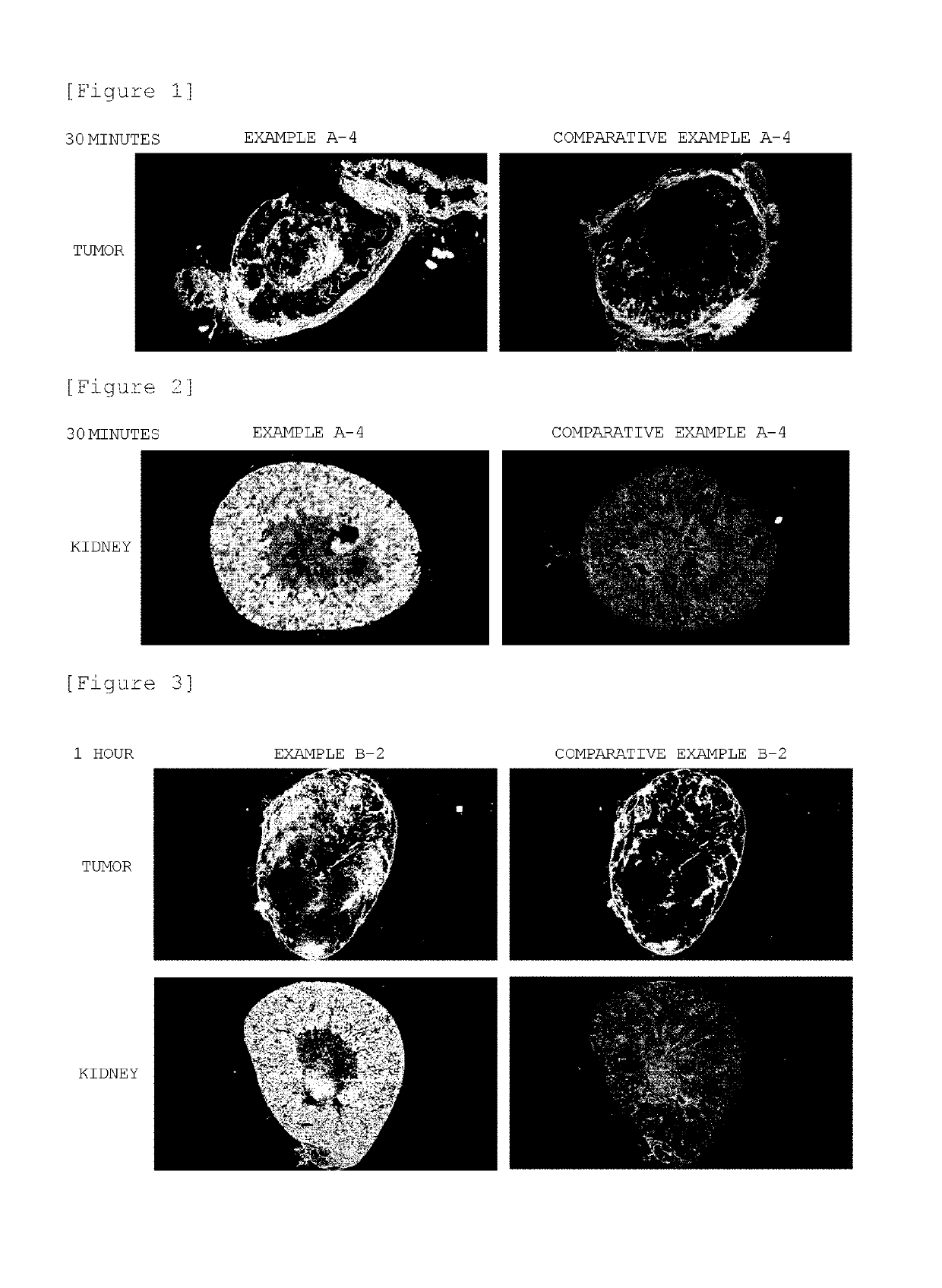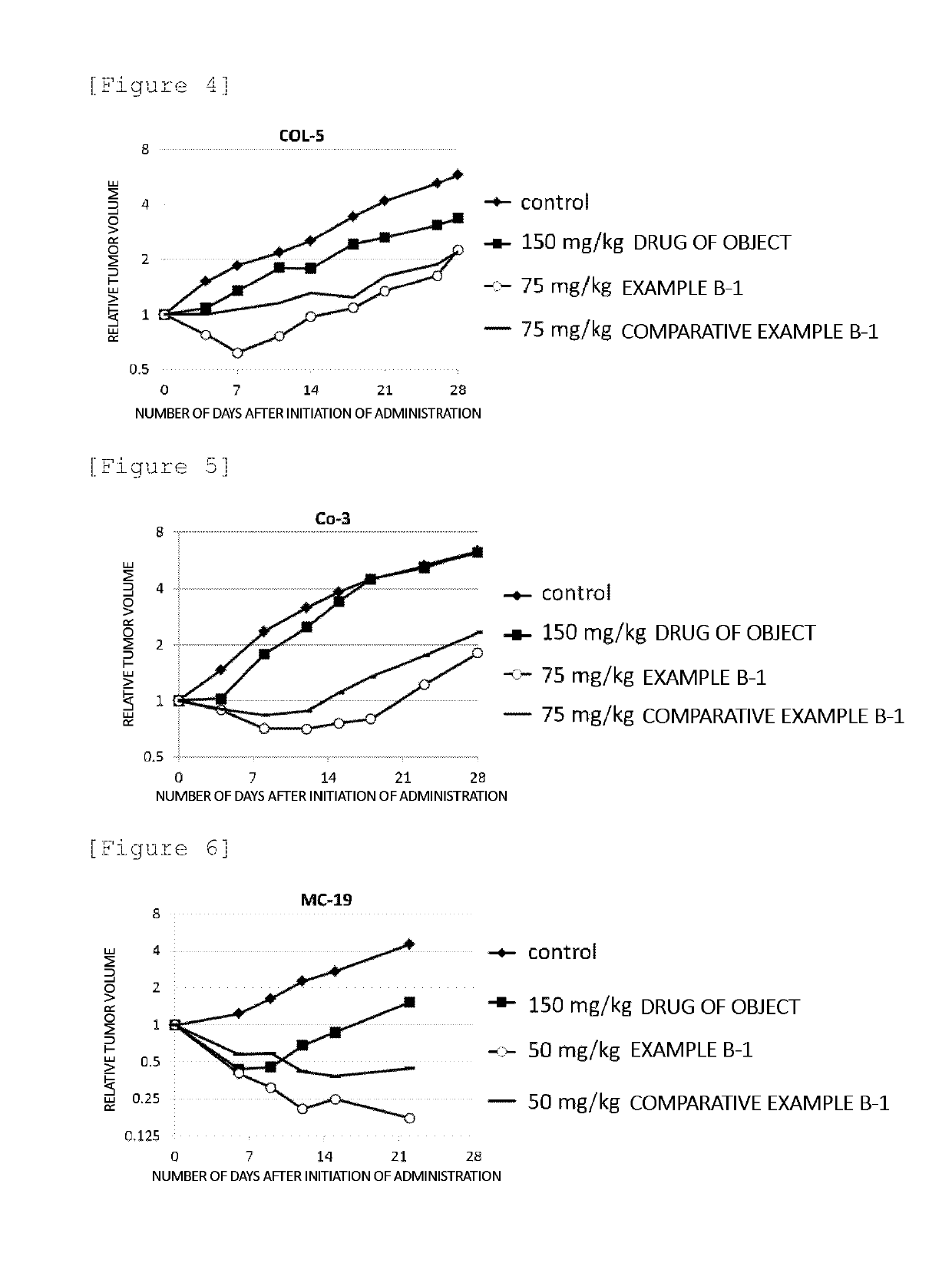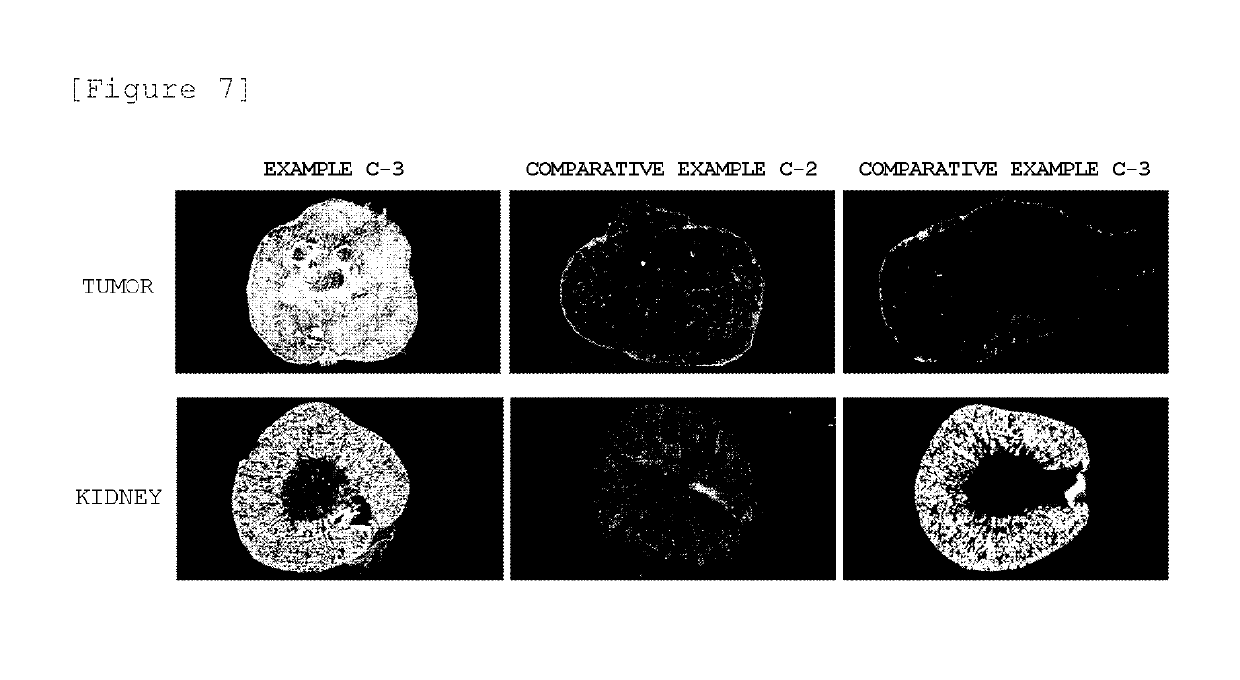Block copolymer conjugate of physiologically active substance
a technology of physiologically active substances and block copolymers, which is applied in the direction of capsule delivery, nanocapsules, drug compositions, etc., can solve the problems of long time-consuming and laborious, dose-limiting toxicity, block copolymer adverse effects on normal tissues, etc., and achieves enhanced penetration into target tissue and/or excretability, small volume average particle diameter, and high penetration performance
- Summary
- Abstract
- Description
- Claims
- Application Information
AI Technical Summary
Benefits of technology
Problems solved by technology
Method used
Image
Examples
examples
[0483]Hereinafter, the present invention will be further explained by way of Examples. However, the present invention is not intended to be limited to these Examples.
[0484]Measurement of the scattering intensities of the physiologically active substance-conjugated block copolymers of Examples and Comparative Examples was carried out using a dynamic light scattering photometer manufactured by Otsuka Electronics Co., Ltd., DLS-8000DL (measurement temperature: 25° C., scattering angle: 900, wavelength: 632.8 nm, ND filter: 5%, PH1: OPEN, PH2: SLIT). Regarding the measurement sample for the scattering intensity measurement, a solution obtained by adding ultrapure water to a physiologically active substance-conjugated block copolymer to obtain a concentration of 1 mg / mL, dissolving the block copolymer by irradiating the mixture with ultrasonic waves for 10 minutes under ice cooling, and then filtering the solution through a 0.2-μm membrane filter, was used.
[0485]Toluene (manufactured by ...
example a-1
[Example A-1] Synthesis of 7-ethyl-10-hydroxycamptothecin (EHC) Conjugate of polyethylene glycol (2 Kilodaltons)-polyglutamic Acid (7.6 Polymer) Block Copolymer
[0503]Copolymer 1 (221 mg) obtained in Synthesis Example 1 and 7-ethyl-10-hydroxycamptothecin (EHC, manufactured by ScinoPharm Taiwan, Ltd., 120 mg) were dissolved in DMF (17 mL), and dimethylaminopyridine (DMAP 10 mg) and diisopropylcarbodiimide (DIPCI 174 μL) were added thereto. The mixture was stirred for 24 hours at 25° C. Subsequently, DIPCI (174 μL) was further added thereto, and the mixture was stirred for another 3 hours. The reaction liquid was added dropwise for one hour to a mixed liquid of diisopropyl ether (230 mL) and ethyl acetate (26 mL), and the resulting mixture was stirred overnight at room temperature. Subsequently, a precipitate was collected by filtration and dried under reduced pressure, and thereby a product (250 mg) was obtained. The product thus obtained was dissolved in acetonitrile / water (98 / 2 (v / v...
example a-2
[Example A-2] Synthesis of 7-ethyl-10-hydroxycamptothecin (EHC) Conjugate of polyethylene glycol (2 Kilodaltons)-polyglutamic Acid (10.0 Polymer) Block Copolymer
[0509]The title camptothecin derivative-conjugated block copolymer (Example A-2) was obtained according to the method described in Example A-1, using Copolymer 2 (324 mg) obtained in Synthesis Example 2 and 7-ethyl-10-hydroxycamptothecin (EHC, manufactured by ScinoPharm Taiwan, Ltd., 210 mg).
[0510]Example A-2 was subjected to a hydrolysis treatment using a 1 N-aqueous solution of sodium hydroxide, and EHC thus released was quantitatively determined by high performance liquid chromatography (HPLC) to thereby determine the EHC content. As a result, the EHC content in Example A-2 was 33.1% (w / w).
[0511]Example A-2 was hydrolyzed in a deuterated water-deuterated acetonitrile solution including deuterated sodium hydroxide, and a 1H-NMR spectrum of the solution thus obtained was analyzed. Thereby, it was confirmed that an isopropyl...
PUM
| Property | Measurement | Unit |
|---|---|---|
| molecular weight | aaaaa | aaaaa |
| wavelength | aaaaa | aaaaa |
| temperature | aaaaa | aaaaa |
Abstract
Description
Claims
Application Information
 Login to View More
Login to View More - R&D
- Intellectual Property
- Life Sciences
- Materials
- Tech Scout
- Unparalleled Data Quality
- Higher Quality Content
- 60% Fewer Hallucinations
Browse by: Latest US Patents, China's latest patents, Technical Efficacy Thesaurus, Application Domain, Technology Topic, Popular Technical Reports.
© 2025 PatSnap. All rights reserved.Legal|Privacy policy|Modern Slavery Act Transparency Statement|Sitemap|About US| Contact US: help@patsnap.com



